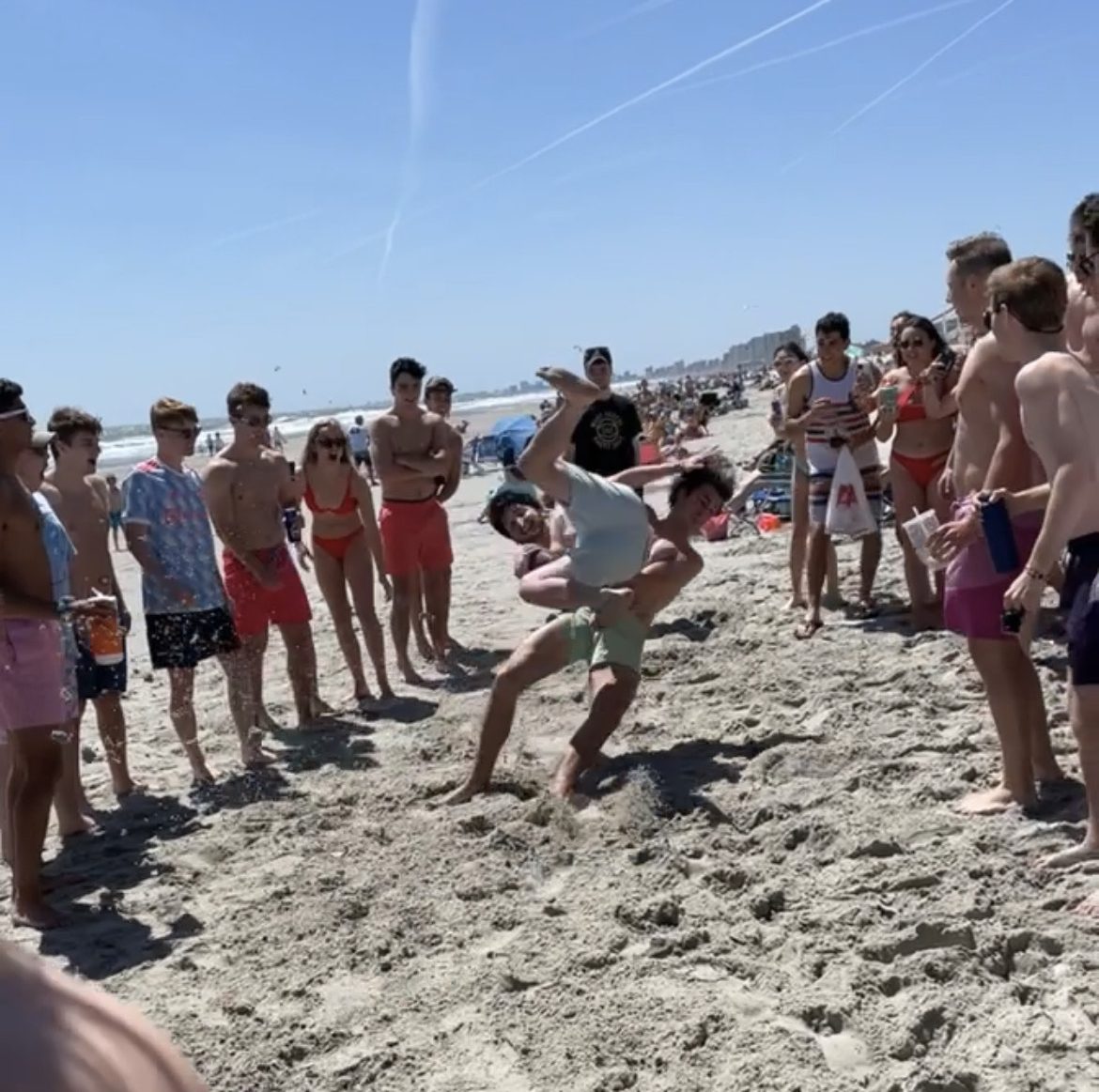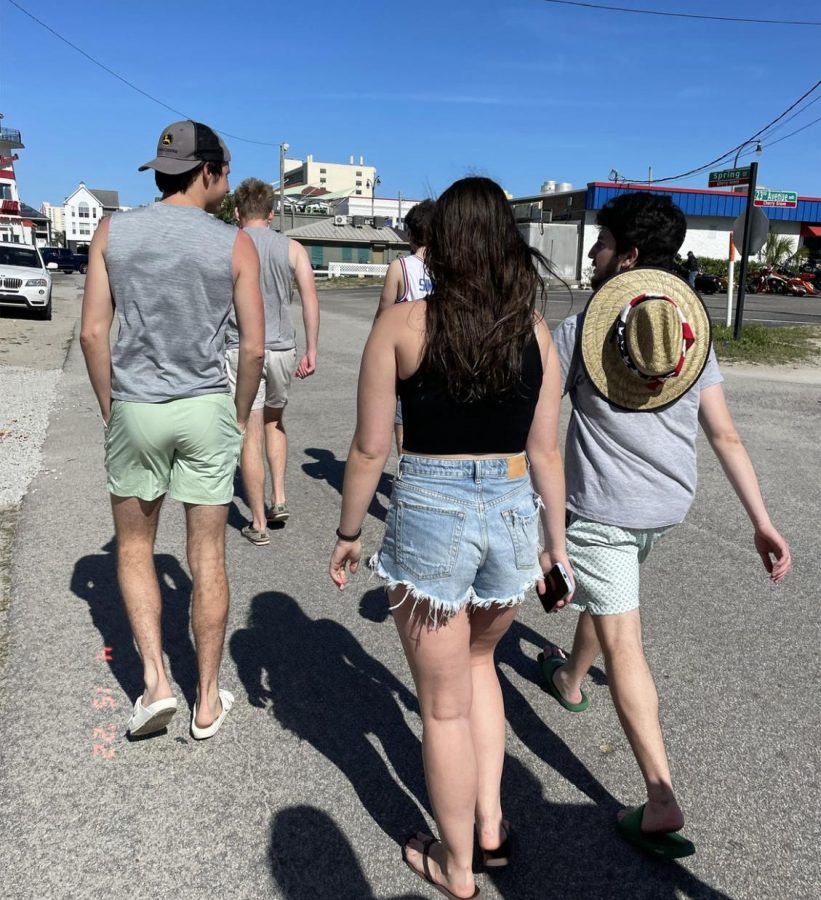Is Beach Weekend feasible? Does it matter?
The greek-life-based trips to the Southeast’s beaches have become a Wake Forest tradition
Students participate in Beach Weekend in 2022.
April 11, 2023
Spring has dawned on the campus of Wake Forest. Flowers are blooming, the sun is shining and students are…painting coolers? The past few weeks, female students have been seen on various lawns, roofs and even in dorm study rooms painting coolers. These coolers are what girls are expected to bring to beach weekend — a trio of days filled with fun in the sun on the coast with members of fraternity life. The houses are paid for in exchange for the coolers and their alcoholic contents. As a non-attendee, I’ve begun to question how Beach Weekend has become a Wake Forest tradition.
Greek life can sometimes feel like the dominant factor in the Wake Forest social scene, taking up Friday nights and Saturday afternoons. This social commitment is one of varying importance to students, but it surely attracts them in packs.

Mountain and beach weekends are the peak of fraternity life, giving brothers a weekend to take off and spend time with those closest to them. As a female student, an invite to one of these escapades could mean that you’ve made it. An invite requires either a close relationship with one of the brothers, romantic or not, or being a “little sister” — girls in each grade that have been chosen by members of the fraternity. An invite is indicative of the time and effort these ladies have invested in going out and securing their spots in the fraternity’s special guest list. However, I have some questions about the weekend’s events and logistical feasibility for the fraternity members and their dates.
First of all, why is it directly after spring break? Is a trip to Myrtle Beach at the end of March really that enticing, when many participants were just spending their breaks at better beaches in Florida or abroad, both of which I’m sure have more to offer than “dirty Myrtle”?
Secondly, how is the weekend financially feasible? Recently, I overheard a member of a fraternity explaining to a friend that their house cost $130 per couple; with more than 30 couples attending. If that was for the entire weekend and not just per night, this would total to more than $5,000 to cover multiple rental houses. Is that amount of money really worth spending on just a few days of fun, and what does it say about the economic status of the attendees? When most of the 72 hours are spent partying, what difference does the location make? And more so, what about other financial obligations such as fraternity dues, gas money and groceries? All of these costs only make members of fraternities seem more financially privileged, which isn’t a problem per se, but the use of such finances can be questionable.
Lastly, what started the tradition of painting coolers? The designs that I have seen around campus were surely inspired by Pinterest pages — yes, Pinterest pages — of ideas from other schools. Many girls spent countless hours of their free time buying materials, sketching and painting the coolers. Not to mention the price of the alcohol they have to buy to fill the coolers.
While it may seem like a transaction — a cooler of alcohol for a spot on the trip — as a woman, it seems like the most fun part of the trip would be this exchange, not the actual weekend. I would certainly have more fun painting something as a “gift” with my friends than I would spending three days with potential strangers, but that’s just me.
Economic concerns aside, it’s a win-win situation. For those who choose to attend, they get to spend a weekend away from campus, likely with their friends, having as good a time as possible. For those who remain on campus, we get to choose from more seats at the Pit and enjoy a weekend to relax and reset.













